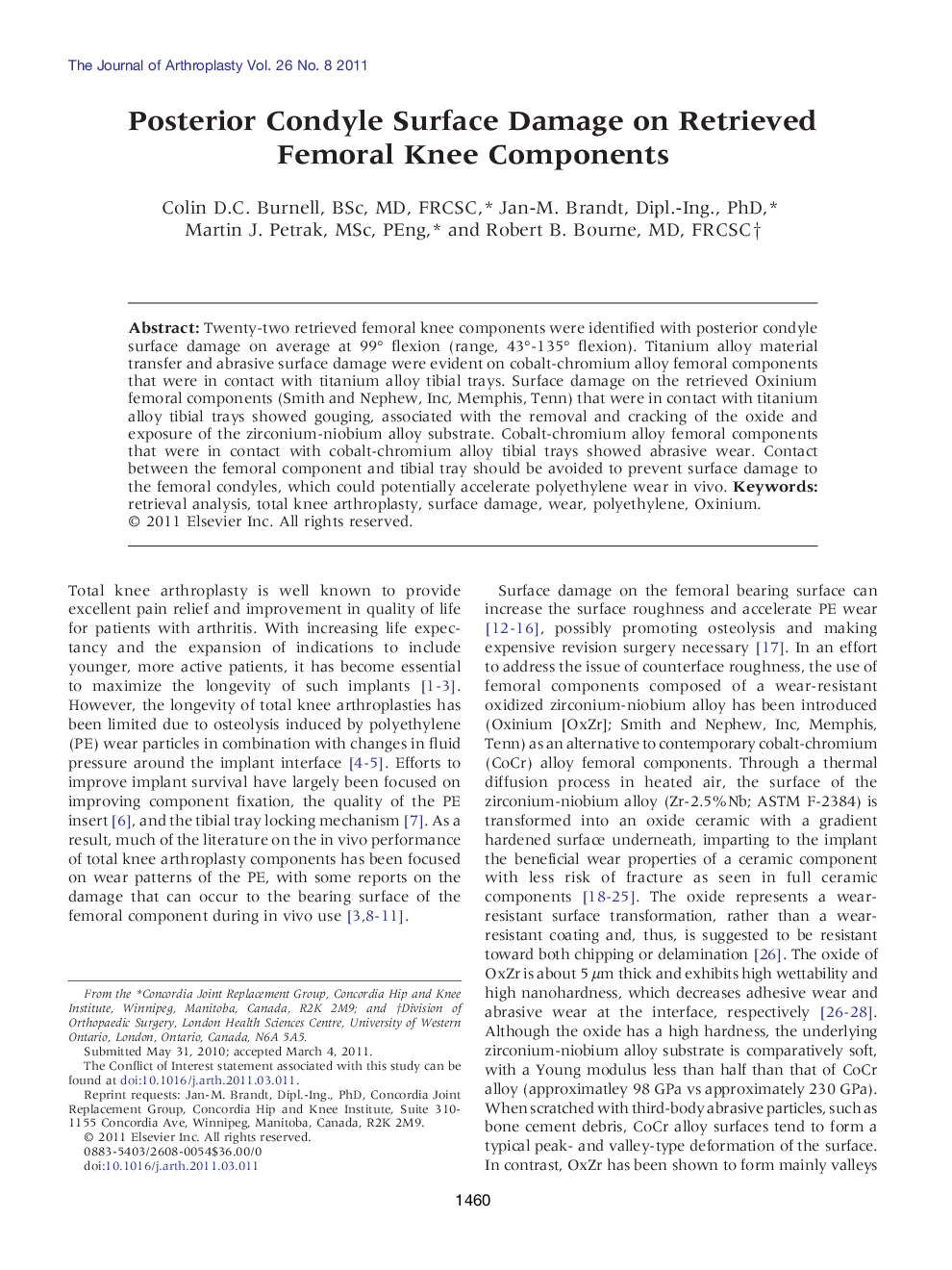| Article ID | Journal | Published Year | Pages | File Type |
|---|---|---|---|---|
| 4062729 | The Journal of Arthroplasty | 2011 | 8 Pages |
Twenty-two retrieved femoral knee components were identified with posterior condyle surface damage on average at 99° flexion (range, 43°-135° flexion). Titanium alloy material transfer and abrasive surface damage were evident on cobalt-chromium alloy femoral components that were in contact with titanium alloy tibial trays. Surface damage on the retrieved Oxinium femoral components (Smith and Nephew, Inc, Memphis, Tenn) that were in contact with titanium alloy tibial trays showed gouging, associated with the removal and cracking of the oxide and exposure of the zirconium-niobium alloy substrate. Cobalt-chromium alloy femoral components that were in contact with cobalt-chromium alloy tibial trays showed abrasive wear. Contact between the femoral component and tibial tray should be avoided to prevent surface damage to the femoral condyles, which could potentially accelerate polyethylene wear in vivo.
